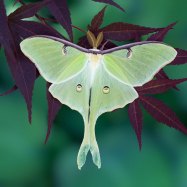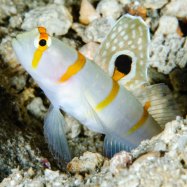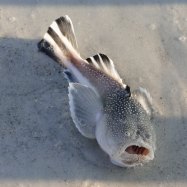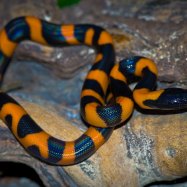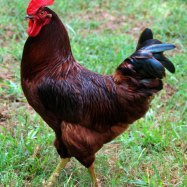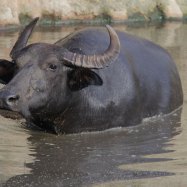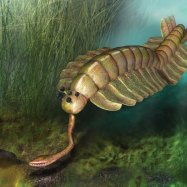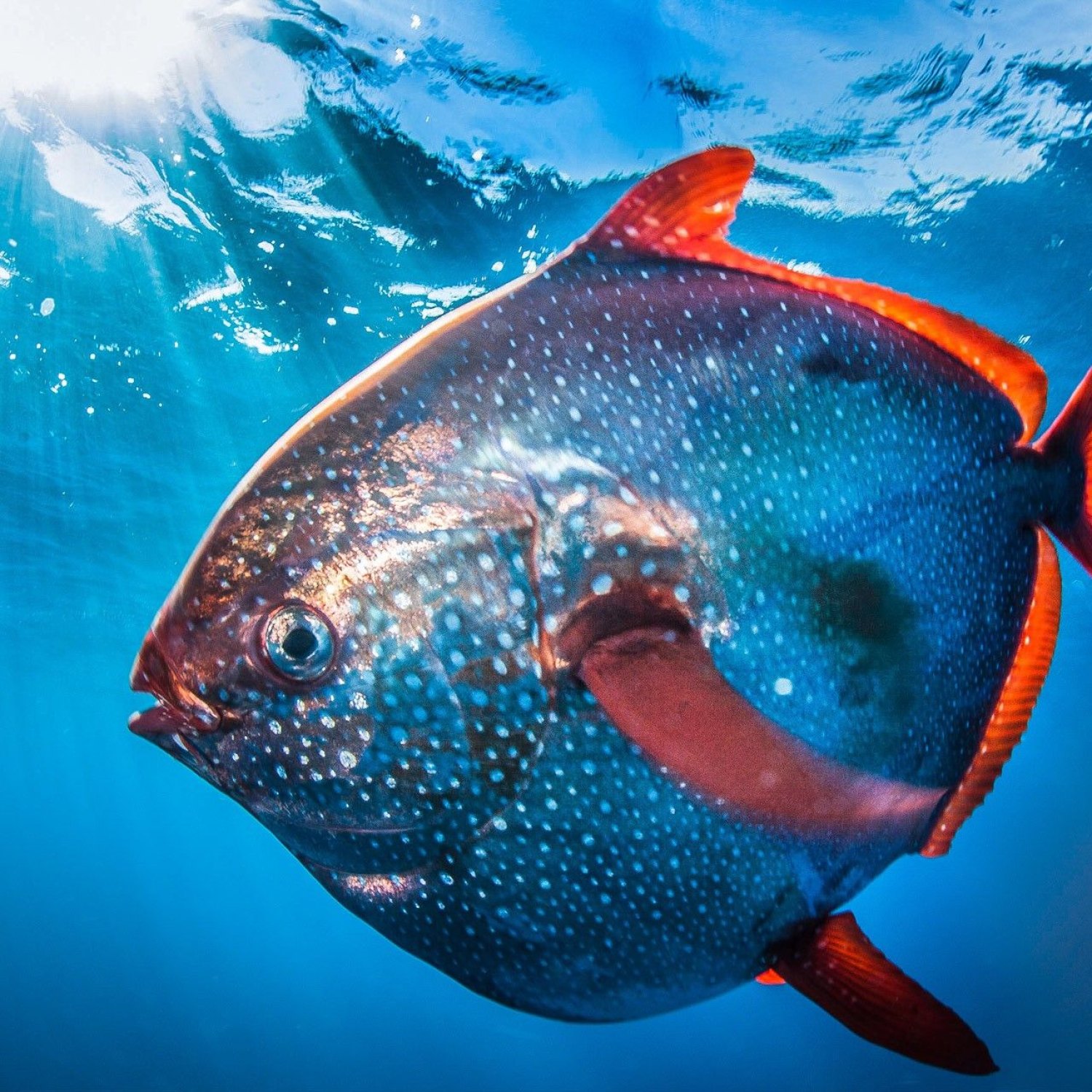
Opah
Opah can grow up to 6 feet in length
Opah, also known as the moonfish, can grow up to 6 feet in length and have a round, disc-shaped body with a tall dorsal fin. They belong to the Lampridae family and are commonly found in the open ocean. These unique-looking fish are a popular catch for anglers and are known for their beautiful iridescent coloration. Keep an eye out for an Opah on your next ocean adventure! #Opah #Moonfish #Lampridae #OpenOcean #UniqueFish
Animal Details Summary:
Common Name: Opah
Kingdom: Animalia
Habitat: Marine
The Fascinating Opah: The Circular Fish With a Flamboyant Coloration
When it comes to marine life, we are often familiar with the usual suspects - dolphins, sharks, octopuses, and colorful tropical fish. But have you ever heard of the Opah? This exotic and intriguing creature, also known as the "moonfish," may not be as well-known, but it is truly a remarkable species. With its distinct circular shape and flamboyant coloration, the Opah is a marvel to behold. In this article, we will dive deep into the unique features and characteristics of this fascinating animal Opah.Meet the Opah: Scientific Name Lampris guttatus
The Opah (Lampris guttatus) is a majestic marine fish that belongs to the kingdom Animalia. Like all animals, it is part of the Phylum Chordata, which includes all vertebrates. Additionally, the Opah is a member of the class Actinopterygii, which comprises all ray-finned fish. Within this class, the Opah belongs to the order Lampriformes and the family Lampridae. While its scientific name may sound complex, it simply means "shining with spots," referring to its unique coloration.Marine Habitat and Geographical Distribution
Opahs are found in temperate and tropical waters across the globe. They can be found in the Atlantic, Indian, and Pacific Oceans, making them one of the few species that have a worldwide distribution. However, they are most commonly found in the open ocean, particularly in the warm waters of the Pacific. This species is pelagic, meaning it spends its entire life in the open ocean, never venturing close to the shore Owl Butterfly.Feeding Habits: Carnivorous Creatures
The Opah is a carnivorous species, which means it primarily feeds on other animals. These fish have a varied diet, and their prey depends on their location. They are known to consume a variety of seafood, including squid, crustaceans, and other fish. The Opah is an efficient hunter, thanks to its round body shape, which we will discuss further later on in the article.The Unique Coloration of Opahs
One of the most fascinating features of the Opah is its striking coloration. These fish display a color scheme that is quite unlike any other. The Opah has a dark blue back with silver sides and a bright red fin. The colors are so vibrant and eye-catching that they appear almost painted on. This distinct coloration is one of the reasons why the Opah is also known as the "moonfish," as it resembles the surface of the moon.The Round Body Shape and Tall Dorsal Fin
The Opah has a rather unusual body shape compared to other fish. Its body is disc-shaped, resembling a large, flattened circle. This shape is known as "laterally compressed," meaning the body is flattened from side to side. This unique shape enables the Opah to be highly maneuverable in the water, making it an efficient hunter. The Opah also has a large dorsal fin that extends from the top of its head to the end of its tail. This dorsal fin is tall and pointed, serving as both a rudder and a means of propulsion for the fish.A Lengthy Fish: Opahs Can Grow Up to 6 Feet Long
The Opah may have a round body shape, but it is far from small. These fish can grow up to 6 feet in length, making them some of the largest fish in the ocean. Despite this length, the Opah is not very heavy. They typically weigh between 100-200 pounds, with the largest recorded specimen weighing in at 600 pounds. Interestingly, Opahs exhibit sexual dimorphism, meaning males and females look different. Males are typically larger and more colorful than females.An Evolutionary Marvel - The Circular Body Shape of Opahs
Now that we have covered the physical characteristics of Opahs, let's delve into why they have such a unique body shape. Circular fish are few and far between in the animal kingdom, making the Opah an evolutionary marvel. Its round shape and extended dorsal fin may seem odd at first glance, but they serve some crucial purposes for this species.Firstly, the round shape of the Opah allows it to be an exceptionally efficient predator. With its compressed body, it can quickly maneuver and change direction while hunting its prey. This flexibility is essential for catching agile prey, such as squid, as it can quickly turn and twist in the water. Additionally, its round shape also helps reduce drag in the water, allowing the Opah to swim faster.
Secondly, the tall dorsal fin of the Opah serves multiple purposes. It acts as a stabilizer, aiding the fish in balancing and maintaining its upright position in the water. Without this fin, the Opah would have difficulty swimming and would continuously roll over. This dorsal fin also acts as a sail, catching the wind and propelling the fish forward. This feature is especially useful when the Opah is on the surface of the water, as it reduces the energy required for swimming.
The Marvels of NLP: Using Technology to Learn About the Opah
As technology advances, we are continuously learning more and more about various species of animals. One of the exciting ways we can use technology to learn about marine life is through Natural Language Processing (NLP). NLP is a type of artificial intelligence that allows us to analyze and understand human language. By using NLP, scientists and researchers can comb through vast amounts of information on the internet to learn more about various species, including the Opah.For example, NLP can be used to analyze scientific articles and publications about the Opah, helping us understand their behavior, distribution, and conservation. Additionally, NLP can also be used to study the Opah's diet, as it can analyze vast amounts of data and identify patterns. Ultimately, NLP is a powerful tool that helps us gain a better understanding of the Opah and other marine species, assisting in their conservation efforts.
In Conclusion
The Opah is an incredible and unique species of fish that has captivated scientists and nature enthusiasts for years. From its stunning coloration to its circular body shape, this fish is a true marvel of evolution. Its ability to efficiently hunt and thrive in the open ocean is a testament to its adaptability and strength as a species. As we continue to use technology such as NLP to learn more about the Opah, we are sure to uncover even more amazing insights into this fascinating creature. So, the next time you're out on the open ocean, keep an eye out for the circular fish with the flamboyant coloration - the majestic Opah.

Opah
Animal Details Opah - Scientific Name: Lampris guttatus
- Category: Animals O
- Scientific Name: Lampris guttatus
- Common Name: Opah
- Kingdom: Animalia
- Phylum: Chordata
- Class: Actinopterygii
- Order: Lampriformes
- Family: Lampridae
- Habitat: Marine
- Feeding Method: Carnivorous
- Geographical Distribution: Temperate and tropical waters
- Country of Origin: Opah are found in the Atlantic, Indian, and Pacific Oceans
- Location: Opah are commonly found in the open ocean
- Animal Coloration: Opah have a unique coloration with dark blue back, silver belly, and red fins
- Body Shape: Opah have a round, disc-shaped body with a tall dorsal fin
- Length: Opah can grow up to 6 feet in length
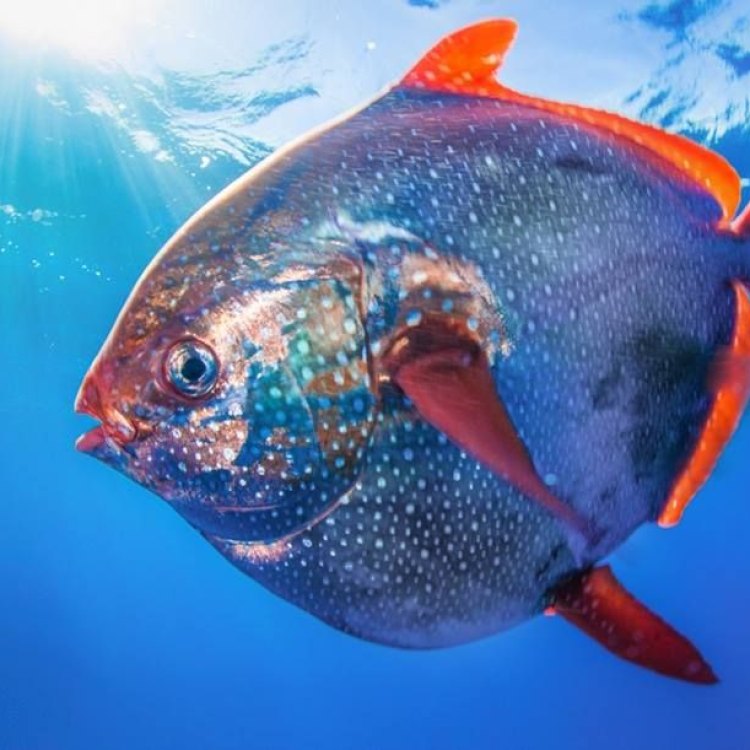
Opah
- Adult Size: The average adult size of an Opah is around 3 to 4 feet
- Average Lifespan: Opah have an average lifespan of 10-15 years
- Reproduction: Opah are ovoviviparous, meaning they give birth to live young
- Reproductive Behavior: Opah are solitary during reproductive periods
- Sound or Call: Opah do not produce any distinct sounds or calls
- Migration Pattern: Opah have a limited migratory pattern
- Social Groups: Opah are typically solitary animals, but they may form small groups while feeding
- Behavior: Opah are active predators and are known for their fast swimming speeds
- Threats: Opah face threats from overfishing and habitat degradation
- Conservation Status: Opah are listed as a species of least concern by the IUCN
- Impact on Ecosystem: Opah play a role in the marine food chain as predators
- Human Use: Opah are targeted by commercial and recreational fisheries
- Distinctive Features: Opah have a large, round pectoral fin and unique coloration
- Interesting Facts: Opah are warm-blooded fish, enabling them to regulate their body temperature
- Predator: Opah are apex predators and have few natural predators
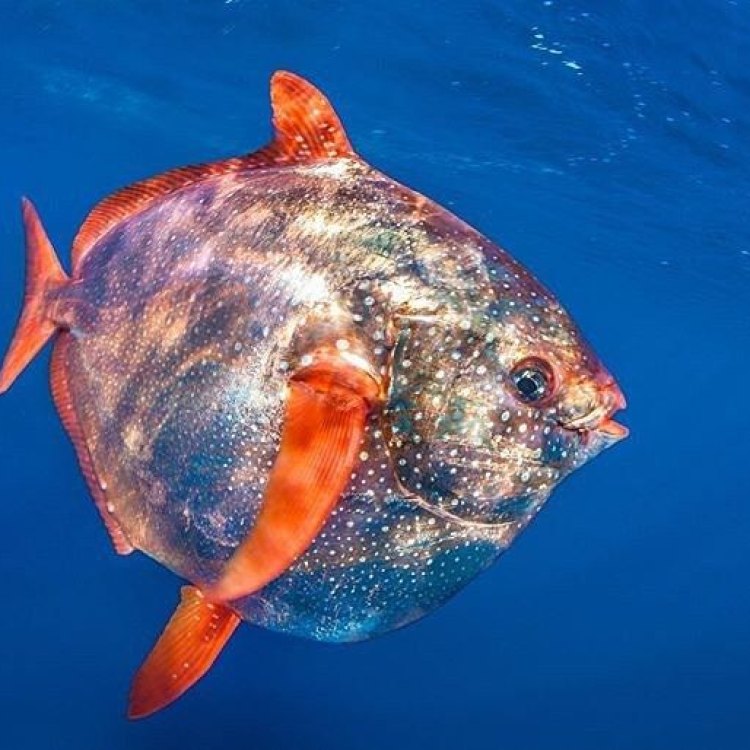
Lampris guttatus
The Fascinating World of the Opah: An Exploration of its Unique Features
Hidden beneath the vast expanse of the ocean, lies a creature that holds many intriguing secrets. The Opah, also known as the "moonfish," is a lesser-known species that inhabits deep waters around the world. With its distinctive appearance and behaviors, the Opah has captured the curiosity of marine biologists and captured the hearts of many. In this article, we will delve into the fascinating world of the Opah and explore its unique features that make it a truly remarkable creature PeaceOfAnimals.Com.A True Giant of the Ocean
The name Opah may not ring a bell for many, but this fish is a true giant of the ocean. The average adult Opah can grow to be around 3 to 4 feet in length, making it a significant size compared to other fish species. It can weigh up to 600 pounds, making it one of the heaviest fish in the ocean. Its sheer size is enough to capture our attention, but the Opah has many more interesting features that make it stand out.A Life Span Surpassing Expectations
Opah are known to live up to 10-15 years, which may not seem very remarkable at first. However, when compared to other fish species, this lifespan is considered quite impressive. Most fish species have a shorter lifespan, with many living only a few years. The Opah's longevity is essential to the balance of the marine ecosystem as it plays a vital role as a predator.The Extraordinary Reproductive Behavior of the Opah
Reproduction is a crucial part of any animal species' survival, and the Opah has a unique reproductive behavior that sets it apart from other fish Ornate Bichir. They are ovoviviparous, which means they give birth to live young that have developed inside the mother's body. This reproductive method allows the offspring to grow and develop in a safe environment before entering the open ocean. It also ensures a higher survival rate for the young Opah, giving them a better chance of reaching adulthood.A Lone Wolf During Reproductive Periods
While Opah may form small social groups while feeding, they are solitary creatures during their reproductive periods. This behavior is quite different from other fish species that tend to seek out mates during these periods. This solitary behavior could be due to the deep waters the Opah inhabits, making it more challenging to find a mate.A Silent Predator
Many animals communicate through sound or calls, but the Opah does not. These incredible creatures are silent predators and do not produce any distinct sounds or calls. This fact may seem insignificant, but it adds to the mystery surrounding the Opah and its unique characteristics.Migrating in Limited Patterns
Compared to other fish species, the Opah's migratory pattern is quite limited. It is believed that Opah do undertake migrations, but their movements are not fully understood. This behavior may be due to the fact that they are slow swimmers, and long-distance migrations require a significant amount of energy.Solitary Yet Social Creatures
Opah are typically solitary animals, but they may form small social groups while feeding. These groups are formed when there is an abundance of food, and the Opah come together to feast. This behavior is known as "resource tracking," where these creatures collectively track food sources and work together to maximize their chances of a successful hunt.An Active Predator with Blazing Speed
Despite their large size, Opah are incredibly active predators and are known for their fast swimming speeds. They have powerful pectoral and dorsal fins that enable them to move quickly through the water, making it easier to catch their prey. This swift swimming ability is vital in the deep waters where Opahs reside, as it allows them to cover more distance in search of food.Threats to the Moonfish
Like many other marine animals, the Opah faces threats from overfishing and habitat degradation. They are often caught as bycatch, meaning they are accidentally caught during fishing trips targeting other species. This indiscriminate fishing has led to a decline in the Opah population, making them vulnerable to extinction. Habitat degradation, such as oil spills and pollution, also poses a significant threat to these magnificent creatures.A Conservation Status of Least Concern
Despite these threats, the International Union for Conservation of Nature (IUCN) has listed the Opah as a species of least concern. This listing may lead many to believe that the Opah's population is stable, but it is essential to continue monitoring their numbers and taking measures to conserve this species.A Vital Role in the Marine Ecosystem
Opahs may not be as well-known as other fish species, but they play a crucial role in the marine food chain as predators. As apex predators, Opahs maintain the balance of the ecosystem by controlling the populations of their prey. Their role as predators is vital in maintaining a healthy marine environment.Utilized by Humans for Consumption
Opahs are targeted by commercial and recreational fisheries for their meat, which is considered a delicacy in some countries. This demand has put additional pressure on the Opah population, making it essential to regulate fishing practices to ensure their sustainability.Distinctive Features That Set Them Apart
The Opah is easily recognizable due to its distinctive features. Its most notable feature is its large, round pectoral fin, giving it a unique appearance compared to other fish. It also has beautiful coloration, with hues of red, copper, and silver on its body. Its iridescent scales reflect the sunlight, making it a sight to behold in the deep ocean.Warm-blooded Fish: A Rare Phenomenon
One of the most interesting facts about the Opah is that it is a warm-blooded fish. Unlike most fish species, which are cold-blooded, the Opah has the ability to regulate its body temperature. This unique adaptation gives the Opah an advantage over its prey, making it an efficient predator in the deep, cold waters of the ocean.Apex Predator with Few Natural Predators
As apex predators, Opahs have few natural predators. Their large size and predatory abilities make them intimidating to other sea creatures. However, they may fall prey to larger sharks or marine mammals such as killer whales. But in general, Opahs are at the top of the food chain in the ocean.In Conclusion
In the vast and mysterious world of the ocean, the Opah stands out as an extraordinary creature. With its impressive size, unique behaviors, and distinctive features, it is no wonder that this fish has captured the attention of marine biologists and ocean enthusiasts. However, we must also recognize the threats facing this remarkable species and take necessary measures to protect and conserve its population. Only then can we continue to marvel at the Opah and all its wonders for years to come.
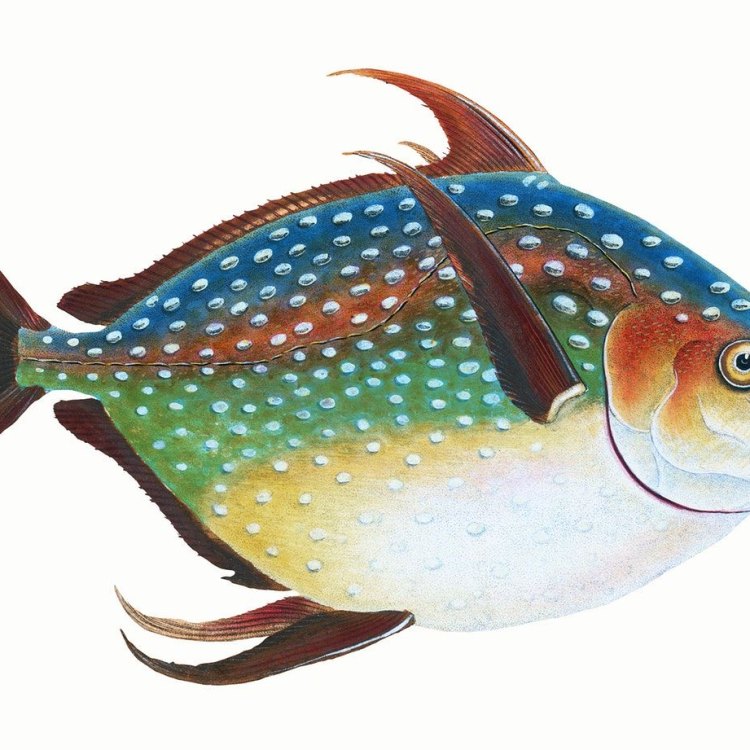
The Fascinating Opah: The Circular Fish With a Flamboyant Coloration
Disclaimer: The content provided is for informational purposes only. We cannot guarantee the accuracy of the information on this page 100%. All information provided here may change without prior notice.

